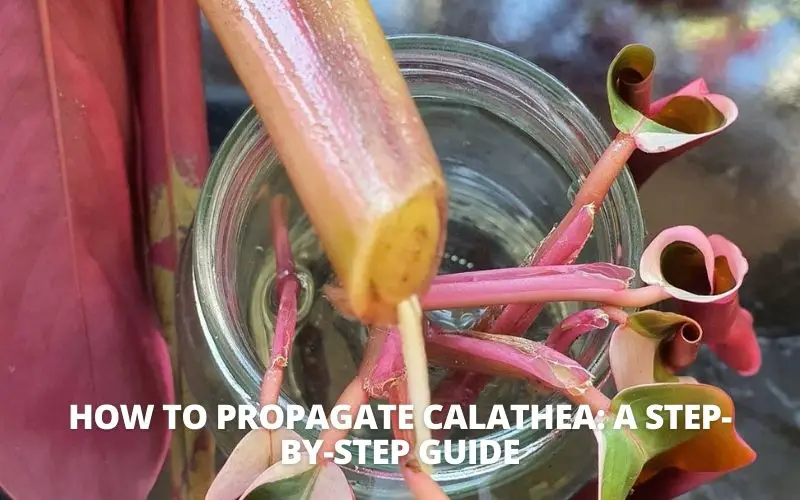Do you want to learn how to propagate Calathea? It’s actually very easy! In this step-by-step guide, we will show you how to do it. Calathea plants are beautiful and make great additions to any home or office. Not only that, but they are also very easy to propagate, so you can share them with your friends and family members.
How to Propagate Calathea
First, you will need to purchase a Calathea plant. You can find these at most garden stores or online. Once you have your plant, choose a spot in your home that has indirect sunlight and good air circulation. Calathea plants do not like direct sunlight, so make sure to choose a spot that is out of the way.
Next, you will need to prepare your potting mix. You can either purchase a pre-made mix or make your own. If you are making your own, mix together equal parts peat moss, perlite, and vermiculite. Once you have your potting mix ready, moisten it with water until it is damp but not wet.
Now, it’s time to propagate your Calathea plant! There are two methods you can use: stem cuttings or division. We will go over both methods below.
Stem Cuttings
To take stem cuttings, simply cut a few inches off of a healthy Calathea plant. Make sure to cut below a leaf node, which is where new roots will grow from. Once you have your cutting, remove the bottom leaves so that only two or three leaves are remaining.
Dip the end of the cutting in the rooting hormone, then plant it in your prepared potting mix. Be sure to water regularly and keep the soil moist. In time, your cutting will develop roots and grow into a new plant.
Division
Another method you can use to propagate Calathea is division. This is best done in the spring or summer when the plant is actively growing. To divide your Calathea, simply remove it from its pot and gently pull it apart into two or three sections. Each section should have a few healthy roots attached. Plant each section in its own pot, and water regularly. In time, your Calathea plants will grow and fill out their pots.

That’s all there is to it! These are just a few simple methods you can use to propagate Calathea. With a little time and patience, you will be able to grow beautiful plants that will last for years to come.
When To Propagate Calathea Plants
The best time to propagate Calathea plants is in the spring or summer when they are actively growing. However, you can also propagate them in the fall or winter if you are careful not to let the roots dry out.
Growing a Calathea Cutting in Water
One of the easiest ways to propagate a Calathea is in water. To do this, simply take a cutting from an existing plant and remove any lower leaves so that only two or three leaves are remaining.
Dip the end of the cutting in rooting hormone, then place it in a glass or jar of water. Be sure to change the water every few days to prevent it from getting stagnant. In time, your cutting will develop roots and can be transplanted into a pot with fresh soil.
Related Post: How to Care for Calathea: The Ultimate Guide
How Often Should I Propagate My Calathea Plants?
You can propagate your Calathea plants as often as you like. However, it is best to wait until they are actively growing to get the best results.
What Are The Benefits Of Propagating Calathea Plants?
There are many benefits of propagating Calathea plants. By propagating them, you can create new plants that are genetically identical to the parent plant. This means they will have the same appearance and characteristics.
Additionally, propagating Calathea plants is a great way to create more plants to share with friends and family members. Finally, it is also a cost-effective way to grow more plants since you will not need to purchase new ones.
The Calathea plant is a beautiful addition to any home, and with the right care, it can be easy to propagate. In this blog post, we will cover everything you need to know about how to propagate the Calathea plant, from simple division techniques to taking cuttings. By following these simple steps, you can create new plants from old ones and increase your indoor garden’s beauty in no time.


